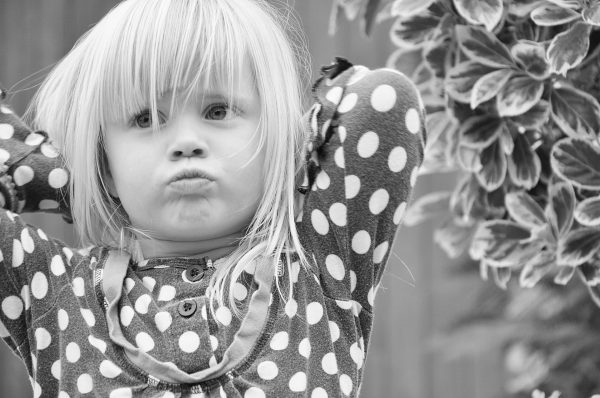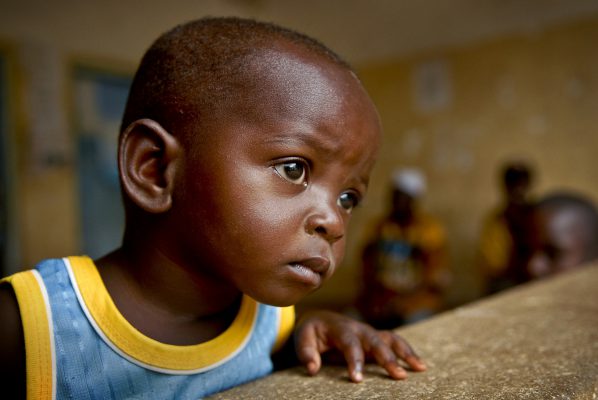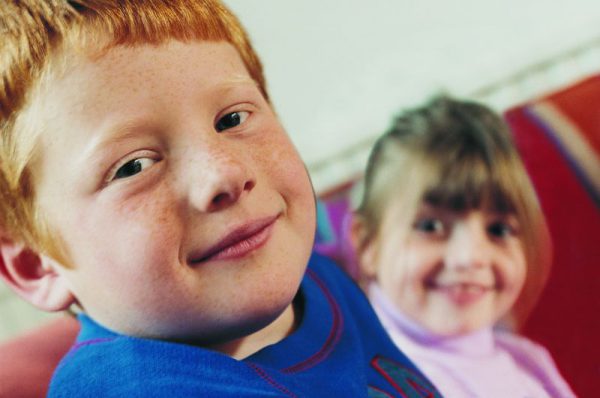Child anxiety disorders are common, but the exact number of sufferers is unknown, most likely because the condition is often under-diagnosed, undiagnosed or unreported. While it is very treatable with good, persistent child anxiety treatments, medical experts agree that symptoms of child anxiety (when misjudged and overlooked) will likely persist as an adult psychiatric disorder.
In other words, early manifestations of anxiety through anxiety attacks during childhood must be addressed as early as possible, reducing the chances of developing into an adult version.
If you have a child, you might be concerned that their attitude or behavior is a symptom of childhood anxiety. Anxiety is actually extremely common, including in young children and teens. Here are some anxiety disorders your child may be suffering from.
What Causes Anxiety Disorders in Children?

There are many studies supporting that childhood anxiety can be genetically acquired. Parents, for example, who manifest anxiety will likely have anxious and nervous children. This condition can be learned as well. It is possible that a child develops an anxiety disorder after a bad experience such as being ridiculed by classmates, being a victim of bullies in school, or making a mistake in front of the class.
Separation of parents, abuse, death of a loved one, or any traumatic experience can lead to an anxiety disorder as well. Fear of being alone, being afraid of the dark or an intense fear of certain animals may be reflections of events with bad memories.
Behaviors during anxiety attacks and symptoms of child anxiety disorders are similar to other psychological, physical and behavioral conditions. It is important to seek professional help to be able to identify potential causes and to provide the right treatment to the patient.
Types, Symptoms of Child Anxiety Disorders

Childhood Generalized Anxiety Disorder
The first type of anxiety disorder your child might have is called generalized anxiety disorder (GAD). This is one of the most common forms of child anxiety disorders, as well as one of the most common in teens and adults.
Generalized anxiety disorder is characterized by chronic worry or fear over almost everything without any apparent reason. Childhood symptoms of GAD are very similar to what adults would experience. Patients with GAD may complain about stomach upset, fatigue, restlessness, and difficulty sleeping. In addition, a child may throw tantrums, cry, have nightmares, may be keyed up, and even begin to show problems in school that were not present before.
Some kids have specific triggers, but others just feel the worry at random times. It can really affect their lives, from making it hard to make friends, to affecting their schoolwork. It is not uncommon for children with GAD to become obsessed with perfection, so that is a good sign to look for.
Panic Disorder in Children
Panic disorder can occur on its own or combined with other types of child anxiety disorders, like GAD. With panic disorder, your child not only has anxiety, but they are prone to panic attacks. These can be brutal for many people, and something children and adults can both experience. Panic attacks don’t last long, but they are often linked to feeling like you are going crazy or are having a heart attack. Some common symptoms of panic attacks include:
- Sweaty hands and increased temperature
- Mild confusion
- Tunnel vision
- Racing heart
- Feeling ‘out of it’
Performance Anxiety
Performance anxiety can be closely linked to social anxiety. A child who is not athletic and good at sports may show signs of fear during physical education class. A child with poor reading skills or who cannot perform simple mathematical equations may panic and become ill when called to recite for the class or solve a problem on the board.
Child Separation Anxiety
It is also not uncommon for kids to have separation anxiety, even as they get older. They exhibit unreasoned fear and panic at being separated from their parents or their home. Symptoms include crying and begging not to go to school. It is also possible that a child complains of stomach aches, headaches, toothaches, and other maladies that would keep him from going to school.
Separation anxiety has a variety of treatments, so it is best to talk to a therapist about how to help your child overcome it. Of course, there are also many other anxiety disorders your child could have, from specific phobias like hypochondria, to PTSD following a traumatic event. Talk to a mental health professional for more info.
Social Anxiety in Children
One of the more common forms of anxiety in children is social anxiety. Social anxiety is almost the opposite of separation anxiety. A child may choose to stay home alone or keep separated from parents. Social phobia can push children to stay away from peers as they feel they are different from other kids or that they have clothes or a hair style that set them apart from other kids. A child with social anxiety may choose to read a book rather than go to summer camp or any activity that involves mingling with others.
With social anxiety, your child probably only has anxiety or panic attacks when in a social situation. This can vary in severity, from not being able to talk to anyone other than their parents or siblings, to only having issues in large crowds. Your child might prefer sitting in the back of the classroom where they feel they aren’t on display, or sit alone in the playground, but do just fine one-on-one with their friends or cousins.
This typically occurs when your child struggles to deal with social interactions, whether that is with people they know or not. This can make it hard for them to make friends, and can follow them as they get older as well. Here are some tips for helping kids who have social anxiety.
Know the Warning Signs
Before you can help your child with their social anxiety, you need to know if this is actually what they have. It is possible they are just introverted, where they prefer being alone in their thoughts, but don’t necessarily have an anxiety disorder. So here are some common signs of a child with social anxiety:
- They have been withdrawing from activities
- It is hard for them to make friends
- They have become uncomfortable talking to teachers
- Your child avoids eye contact or fidgets a lot when talking to someone
- They have trouble communicating even at gatherings with friends or family
If any of these sound familiar, your child might be struggling with social anxiety. Though you may want to talk to a counselor or child psychiatrist, since in many cases, shyness can be confused with actual social anxiety. They are often handled very differently.
Don’t Push Them too Much
Once you know that your child has social anxiety, you can slowly start helping them work through it. The first thing to keep in mind is that you don’t want to push them too much. This is really important, because just forcing them to interact with different people often makes the anxiety worse, not better.
You don’t want them to avoid social situations forever, but to ease them into it gracefully. Have open communication with your child to discuss what they are struggling with and see if you can come up with a compromise they are comfortable with, but that leads them in the direction of dealing with their social anxiety.
Encourage One-on-One Activities
A good way to slowly help them face their fears and deal with social anxiety is to put them with someone else one-by-one. They might not feel comfortable speaking to someone in a group of people, but perhaps you can set up play dates with just one other child. Many children (and adults) with social anxiety do okay in smaller groups of people as opposed to parties.
Treatment of Child Anxiety – How to Calm an Anxious Child

When you have a child that struggles with symptoms of child anxiety and panic disorder, it can be incredibly frustrating not knowing how to help them. Luckily, there are a few techniques you can try out such as journaling, deep breathing exercises, yoga, a ‘Calm Box’, and distracting activities.. Here are some different ways to calm an anxious child without just telling them to relax.
Have Them Write Out the Problem
For many kids, the anxiety isn’t just general like from GAD, but is actually linked to something specific. Perhaps they have an oral presentation at school they are afraid of doing, or they are having panic over separation anxiety as you have a trip coming up soon.
When your child is feeling anxious, no matter what is causing it, giving them a journal to write out what they are feeling can be one of the more effective child anxiety treatments. They can write about anything and keep it private, with you making a promise you will only read it if they want you to. Just the act of writing it down can be one a very helpful treatment of child anxiety.
Give Them Activities to Distract Them
In other cases, kids do best when they don’t have to think about what is making them anxious, particularly when they are having a panic attack. This is when toys and activities come in handy. Don’t just put them in front of a television, as that is often the wrong form of stimulation to get out of a panic attack. Instead, get them some different sensory activities using various colors and textures, try fidget toys, or give them crafts and art supplies.
Learn Deep Breathing Exercises
Breathing exercises are recommended to most people with anxiety and panic disorder, including children and teens. You can work with your child to learn breathing exercises and do them together. Deep breathing is so healing and is a natural way to help reduce overall anxiety and help with various panic attacks. Whether your child has a specific phobia, generalized anxiety, panic disorder, or separation anxiety, these breathing exercises can help tremendously.
Reward Their Bravery and Courage
While you don’t want to punish your child for being too anxious or worrying too much, it is okay to reward them when they are brave and courageous. Even children with anxiety can overcome it and try really hard to put themselves out there and try new things, even when they are scared to do so. It is good to encourage this type of behavior.
What to Put in a Calm Box
A calm box is a type of box used in child anxiety treatments that includes different items for anxious kids. Some calm boxes are catered to certain anxiety disorders, like items that make a child with anger issues settle down their mind, while other boxes include different colors and textures for kids with sensory issues. The following information provides some general items you can put into a calming box for different forms of anxiety in children.
Something Soft and Cuddly
The first thing you should include in a calm box for kids with anxiety is something soft and cuddly that they can hold onto. This is good for kids who are having a panic attack or whose anxiety is helped by holding onto something.
If your child usually goes for their favorite pillow or stuffed animal in bed when they are worried or anxious about something, it is a good sign that this is an item to help them calm down. You can even bring them to the store with you to pick out their favorite stuffed animal.
Creative Activities
Many children do well when they can distract their minds from what is giving them anxiety, so include some activities in the calm box. This might be coloring books and crayons or colored pencils, a sketchbook with pencils, or other activities like a jewelry making kit or clay to make mold objects.
There are a lot of different toys and activities you can buy or put together that will give your child something to do that expresses their creative nature, while also providing anxiety relief.
Fidget Toys
Fidget toys are good for many kids with anxiety as well. These are another way to keep your child’s focus on something else. The fidget toys might have textures that are good for kids with sensory issues, like balls of slime, while others just keep them occupied like finger squeezers or stress balls. Then there are items like funky pencil toppers with bright colors, but also that can be moved around when they want to fidget with something.
Various Colors and Textures
In addition to the fidget toys, you might want to put other items that have various colors and textures. This will depend on the age of your child and what they are most interested in. Just think of items they can use, figure out, or play with that will give them more textures and bright colors to bring them away from what is giving them anxiety and focus on their other senses.
Yoga for Anxiety in Kids
An excellent treatment of child anxiety is to have them do yoga. Yoga is becoming very popular for kids and teens because of all the many benefits it provides. Not only are there are a lot of important physical benefits, but emotional and mental ones as well. Kids with anxiety will find that they are able to relax more often and even avoid major anxiety attacks by doing yoga on a regular basis.
Breathing Exercises Relieve Anxiety
Through yoga, your child is going to learn how to focus on their breathing. These breathing exercises are not only important during each yoga pose, but they can be extremely efficient at helping with panic attacks and other forms of anxiety. Breathing exercises is one of the top remedies for a panic attack, so if your child has generalized anxiety disorder or panic disorder, learning the breathing exercises has many benefits.
The Exercise Itself is Soothing
Yoga is a very relaxing exercise that is working on strengthening the body and improving flexibility, while also providing a soothing environment. Whether you do yoga with your kids in the living room or bring them to a family-friendly beginner yoga class, it will be a good activity for the entire family. Just make sure you choose yoga classes with moves that are good for kids to do, such as with Hatha Yoga, which is ideal for beginners.
Yoga Improves Kids’ Self Esteem
When your kids start doing yoga, they will also gain confidence and improve their own self esteem. They know they are getting stronger and might even notice that their body is leaner and fitter.
This can help tremendously especially with kids who are nearing their teenage years and might not have the best confidence through puberty. This can help with kids who have social anxiety feel confident enough to talk to other kids and make some friends.
Good Yoga Poses for Kids
There are a lot of different yoga poses you can have your kids try, from basic to advanced. Some good poses to start with (see below) are the Sun Salutations series, along with the child’s pose, tree pose, and warrior pose. Many kids also excel when they do poses like headstands. Kids tend to be more flexible than adults, especially active kids, so you might find that your children learn the more advanced yoga poses very quickly.
- Sun Salutation Series
- Child Pose
- Tree Pose
- Warrior Pose
Using Herbs to Calm Tension, Anxiety, Panic and Stress in Kids
PureCalm is a natural, safe and effective liquid herbal formula that works quickly to eliminate symptoms of tension, anxiety, stress, panic attacks and irritability in both children and adults.
PureCalm helps maintain balanced emotions during everyday pressure, stress and common nervous tension. Created by our team of experts in natural medicine, this remedy is pharmaceutically manufactured to the highest standards, combining the soothing properties of Lemon Balm with those of Lavender and Passion Flower, to bring you relief within minutes!
For children who suffer from chronic anxiety, PTSD and/or severe panic attacks, combining PureCalm with MindSootheJr can be an integral part of your child anxiety treatments giving effective, long-term reduction of your child’s symptoms.
Learn more about PureCalm now.
Why do we promote this?






 Fill out the form below to sign up to our free natural health and healing newsletter and stay up to date on our latest articles about holistic healing therapies and effective home remedies for common ailments. As a thank you for joining our newsletter, we’ll also send you
Fill out the form below to sign up to our free natural health and healing newsletter and stay up to date on our latest articles about holistic healing therapies and effective home remedies for common ailments. As a thank you for joining our newsletter, we’ll also send you